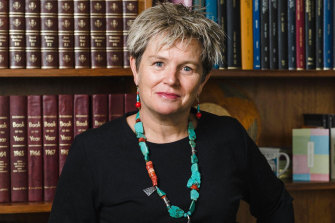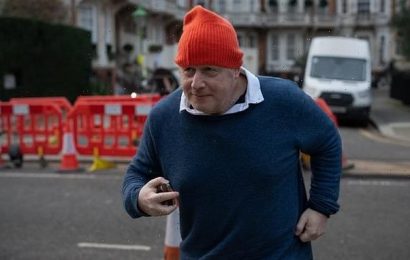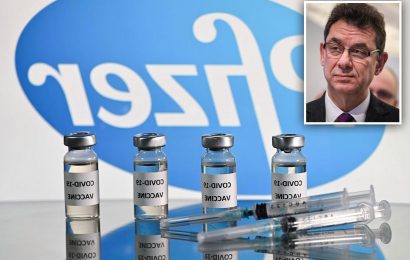Key points
- Modelling from the Burnet Institute has estimated that hundreds of Victorian lives could be saved if COVID-19 transmission was reduced.
- be saved if COVID-19 transmission was reduced. Influential modeller Professor Margaret Hellard said people shouldn’t be fooled into thinking there was nothing they could do to make a difference.
- In Victoria, more than 220 lives have been lost to COVID-19 in the first few weeks of June alone.
Hundreds of lives could be saved and tens of thousands of COVID-19 infections avoided if more people wore mask indoors and took other measures to reduce the spread of the virus.
This is the view of Professor Margaret Hellard, of the Burnet Institute, who led a team of disease modellers whose work influenced decisions made by Victorian and New South Wales governments last year.
Burnet Institute epidemiologist Professor Margaret Hellard says more can be done to prevent COVID-19 infections.
She urges the public not to give up on trying to limit transmission of the disease, arguing that many COVID-19 deaths could be avoided by delaying some infections this year.
The epidemiologist said this was because the same people may not get the virus in subsequent waves or, alternatively, when they were infected at a later time, they’d survive it because treatment or vaccines had again evolved and improved.
“I often think the biggest trick we do … is to make people think that there is nothing that they can do; that they’ve got no agency, they’ve got no power,” Hellard said.
“But we all do have some ability to change things still.”
The deputy director of the Burnet Institute pointed to the lives that were saved in Victoria by efforts in late 2021 to suppress the Delta wave until the state’s rate of vaccination had increased.
“This notion of ‘they would have died anyway’ [is wrong],” she said.
“[People] didn’t [die], because they were saved right there and then. They were at Christmas lunch. They were at New Year and they are probably at the shops right now.
“We will never know who they were, because they didn’t die.”
The view that any COVID-19 deaths avoided this year could be avoided entirely is not shared by all Australian epidemiologists and disease modellers. They have varying opinions on the value of public health measures when the virus is rife and will not be eliminated.
The head of Monash University’s epidemiological modelling unit, Associate Professor James Trauer, said: “my view is that if we slow transmission now, we reduce the daily number of deaths that occur. But we are largely deferring those deaths because most of those people will get exposed in the next couple of years”.
A recent research piece by Hellard and her colleagues at the Burnet, including director Brendan Crabb, forecast that cutting transmission by 10 per cent would save between 198 and 314 lives in Victoria from May to the end this year.
Reducing spread by 20 per cent could save up to 2000 lives nationally, or more than 500 in Victoria, where more than a million infections could also be avoided, the research suggests.
Hellard said the team deliberately avoided saying how transmission should be reduced. However, improved building designs to enhance airflow would help. In the event of a new COVID-19 wave, short-term measures that could be adopted include increasing working from home and mask use.
But Hellard said it was critically important the community was supported in these endeavours.
A 2021 study , of which Trauer was a lead author, estimated face coverings reduced the spread of COVID-19 during Victoria’s second wave by about 40 per cent. Trauer said the figure was so high because masks were mandatory in Melbourne outside the home in late July 2020.
A study released last month by researchers from the University of Bristol and University of Oxford estimated “population mask wearing” in public reduced COVID-19 transmission by 19 per cent. However, Trauer said this was reliant on everyone wearing masks. So for example, if 50 per cent of people wore masks, transmission would be reduced by about 10 per cent.
The Victorian government would not say whether it had forecast the impact of indoor mask mandates on deaths and infections as part of the modelling regularly commissioned by its health department.
More than 220 people lost their lives to COVID-19 in the first few weeks of June.
A Victorian Health Department spokesman said the department was still “strongly recommending masks in shared indoor settings; if you can’t physically distance; or you are with those more vulnerable to COVID-19″. The department also encouraged victorians to ensure their vaccinations are up to date. Other advice is provided in the government’s “stay well this winter” campaign.
Masks are only mandated in a few locations, including public transport and hospitals, despite increasing pressure on overloaded Victorian hospitals made worse by flu and COVID-19 presentations.
Deakin University epidemiology chair Catherine Bennett said even those who ended up catching COVID-19 could avoid repeat infections by wearing a mask.
Bennett, who has so far dodged COVID, said she found wearing a mask to be “a pain” with her glasses, yet she still wore them while in public with other people most of the time.
She said stronger public messaging would normalise mask use.
“There are still people who, if enough other people were doing it, would do it themselves,” she said.
Leading infectious diseases expert Professor Allen Cheng said, while he would like to see COVID-19 cases reduce, the question was what was the best way to do that while making sure society could function.
“We can encourage people to wear masks, we can improve ventilation, but they’re sort of incremental changes,” he said. “What we need to reduce transmission substantially would be a lockdown or things like that, and we are just not at the point anymore.”
Most Viewed in National
From our partners
Source: Read Full Article








